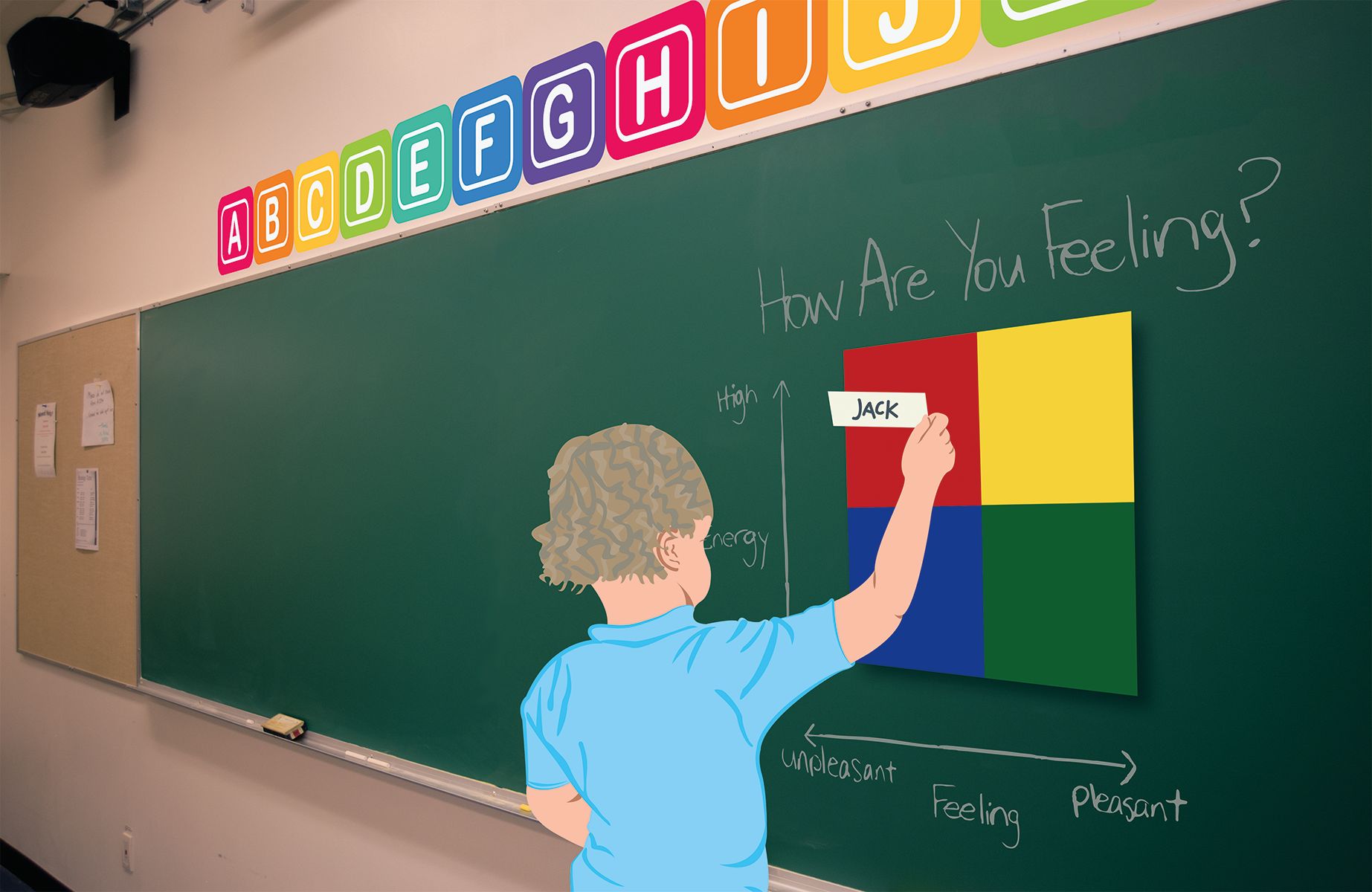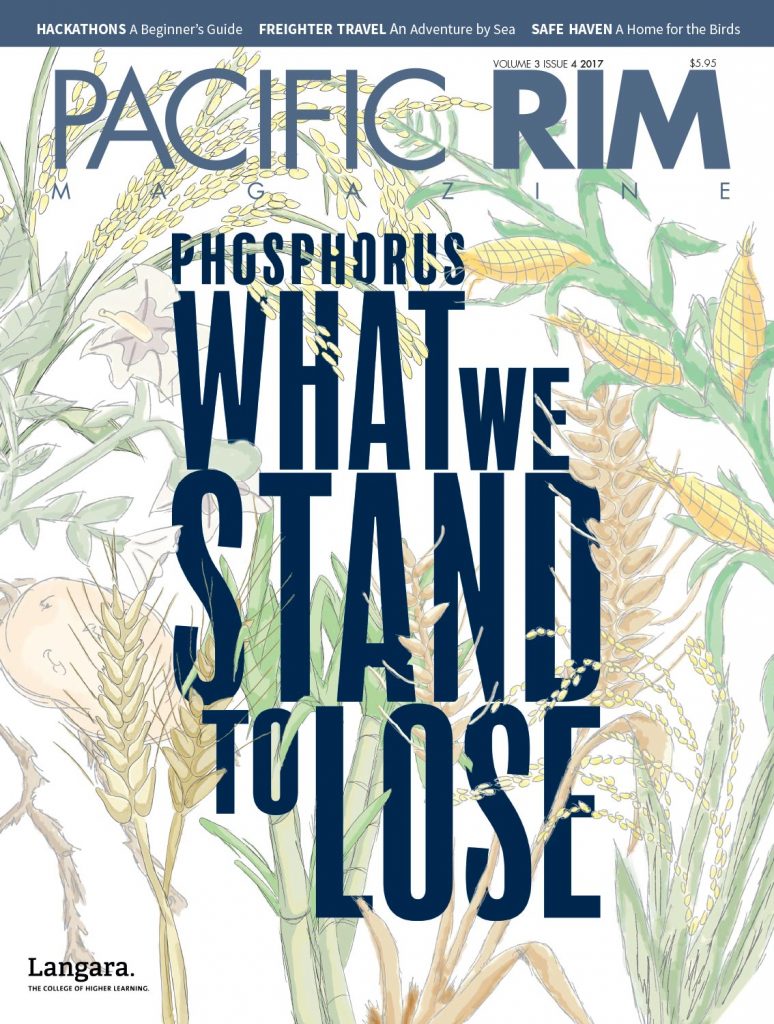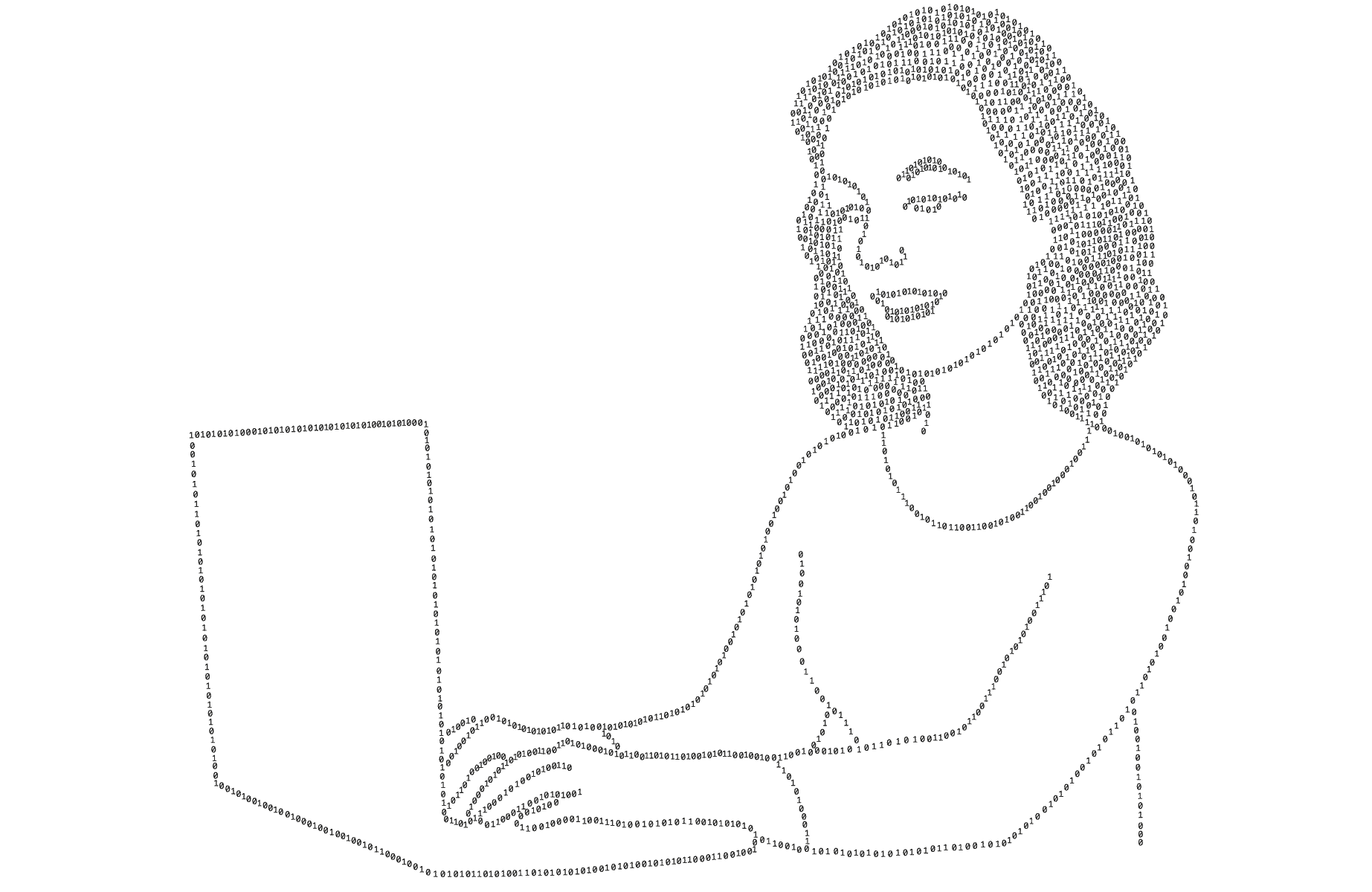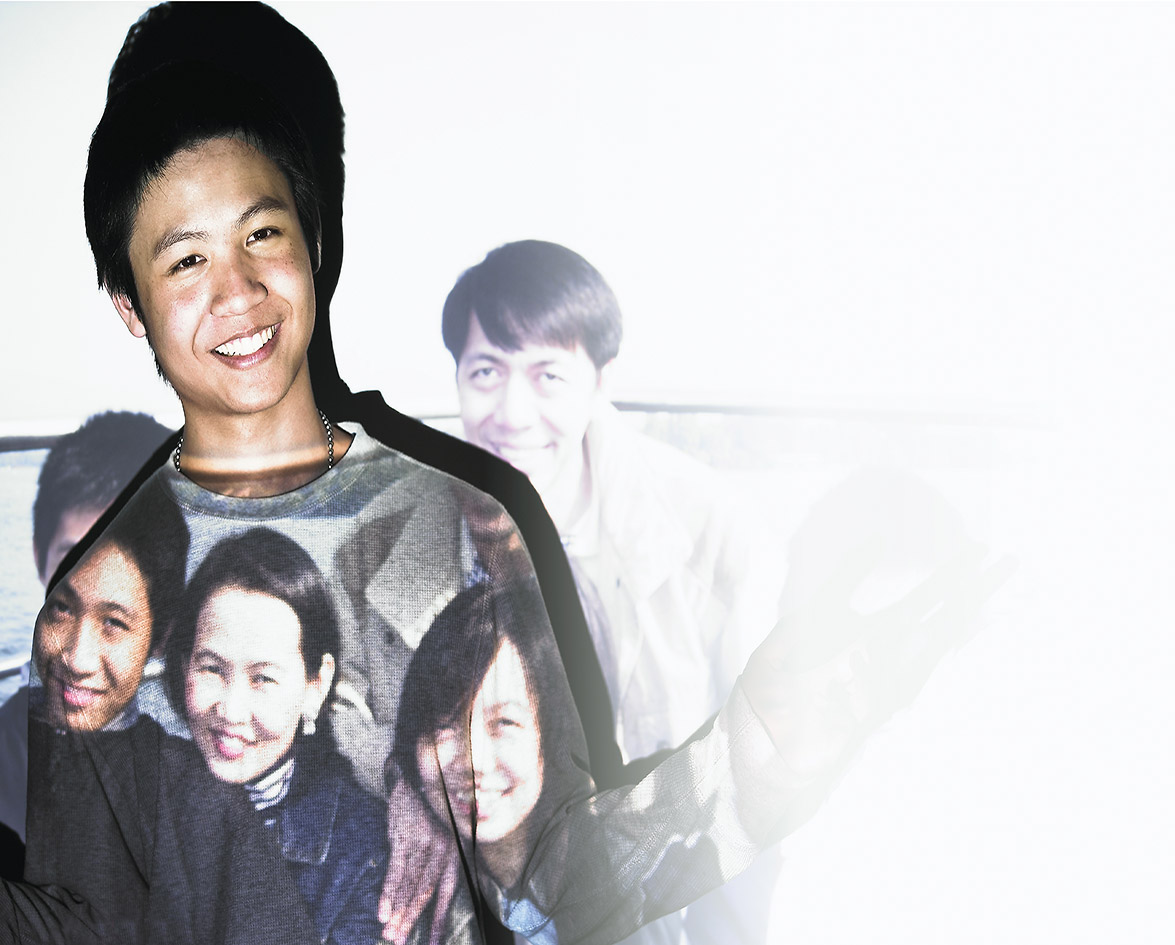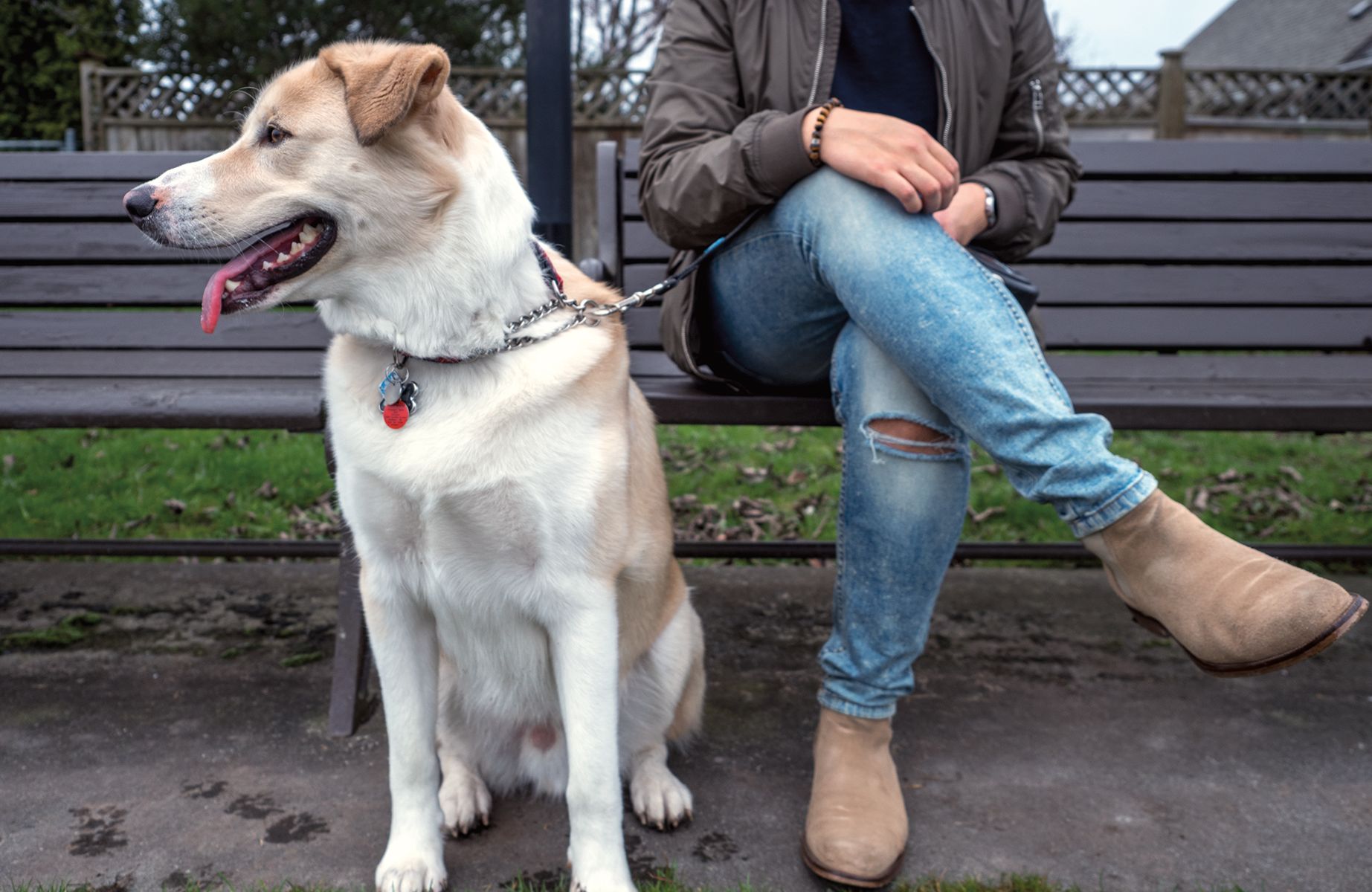The bell rings at 9:00 am sharp. Twenty-one children pour into a first grade classroom and stand in front of four coloured squares: red for angry, yellow for happy, blue for sad, and green for calm. The children take turns placing their names in one of these squares. They find their seats, and the day begins.
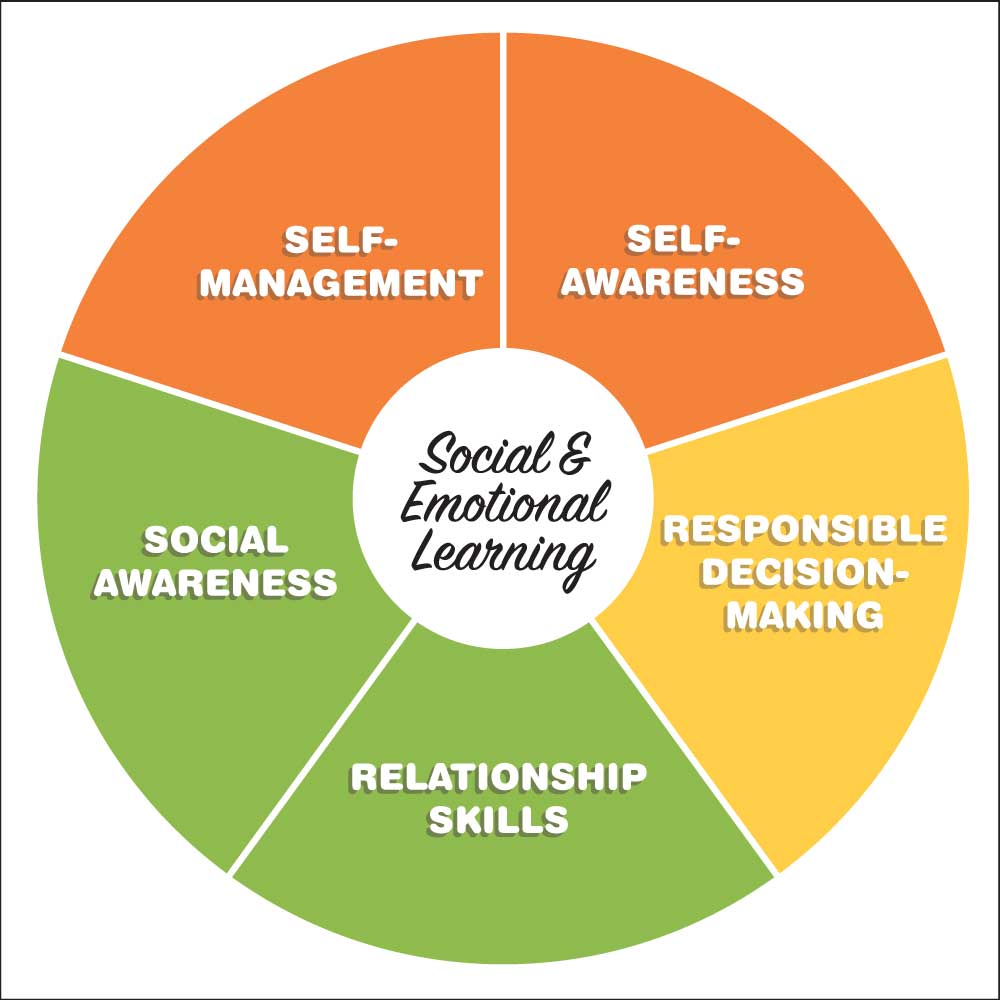
The four coloured squares make up a mood meter, one of many tools modern teachers are using to help educate children about their emotions. The meter teaches children to recognize how they feel, think about how they might want to feel, and how to make that shift. By sharing their mood, the children learn all emotions are okay and their classroom is a safe place. The benefits of the mood meter extend to the teachers. It provides them insight into their students’ state of mind.
Early childhood educator Frankie Sobers of Vancouver, BC, puts it this way, “Respect for your fellow kids and inclusion would be two things [I want kids to take away from here]. Regardless of whether you’re a 3-year-old or a 33-year-old, you still need to respect your fellow man.”
The importance of social emotional learning (SEL) is something today’s schoolteachers have come to understand, and there is research to support this knowledge. In a technical report by Payton, J. et al titled “The positive impact of social and emotional learning for kindergarten to eighth-grade students: Findings from three scientific reviews (2008),” over 300 research studies on SEL were examined. The report states, “Social emotional learn- ing programs improved students’ social-emotional skills, attitudes about self and others, connection to school, positive social behaviour, and academic performance; they also reduced students’ conduct problems and emotional distress.” The report concludes that, “SEL programs are among the most successful youth-development programs offered to school-age youth.
The Dalai Lama Peace and Education Center, a charitable Vancouver-based organization, runs the Heart and Mind programs, which are geared towards educating the heart along with the mind. The project lists five positive human qualities that make up heart-mind well-being: compassionate and kind, solves problems peacefully, secure and calm, alert and engaged, and gets along with others.
These qualities are key in light of the understanding that learning and teaching are innately relational processes. Vancouver-based early childhood educator Miriam Arden says, “Teaching and learning, none of that can happen without relationships. Relationships are the foundation to everything. Relationships between children. Relationships between teacher and student. Between teachers. We need strong relationships in order to build strong communities. And so it all starts with social emotional learning.”
In the United States, the MindUp program, an educational initiative spearheaded by actress Goldie Hawn, similarly advocates the benefits of SEL. The program encourages practicing “brain breaks” and taking “mindful action in the world.” The MindUp framework has been adopted in schools across the US and has gained popularity in Canada as well.
The Roots of Empathy (ROE) pro- gram, developed by Canadian Mary Gordon, has been implemented in schools in North America, Europe, and as far as New Zealand. ROE, an experience-based program, involves bringing an infant to a classroom every three weeks throughout the school year. The children get to observe the baby and see it grow. They identify the baby’s emotions, and in the process, learn about their own. The program has shown success in increasing positive social behaviours such as helping and sharing, and decreasing negative ones like anger and violence.
In September 2016, BC implemented SEL in kindergarten to grade nine curriculums. The new curriculum identifies three core competencies at the heart of learning: communication, thinking, and personal and social competency. Although SEL has been an implicit part of teaching in BC for years, this is the first time those goals have been explicitly stated in the curriculum. The change is momentous for SEL and educators, as it marks a shift from traditional teaching methods towards a more modern and comprehensive approach.
The focus of this new curriculum is in line with present needs and thinking, and reflects what we now know about how children learn. As Miriam Arden says, “Academics are important, but what I want children to learn in school is to be kind, compassionate, empathetic human beings, who treat others with respect, and who go about the world in a way that is socially responsible.” With the widespread adoption of SEL in schools, this goal is being shared the world over.





